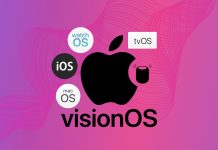
Table of Contents
The Many Parts of a Hardware System
Finding the best point of sale (POS) hardware bundle can seem like a very confusing task but it’s actually quite simple with the right guidance and the right vendor behind you to help you set up, upgrade, and maintain your system. After you and your vendor assess what you will need to use your system for you will be able to pick some of the hardware that you want to use. Knowing the advantages and disadvantages of each can make the process quick and painless.
Terminals
Terminals are going to be the heart and soul of all POS equipment, allowing you to see everything that’s being done in the system and, in the cases of LCDs and tablets, allow you to actually use the system at all.
Monitors with Keyboards
Having a monitor with a keyboard is one of the more fundamental types of POS terminals. These systems are, overall, extremely flexible and functional allowing each button to be programmed for different items but are somewhat difficult to learn unless you’ve had experience with them. Although their cost effectiveness and flexibility make them great for grocery stores and fast food shops they don’t last long, take up a large amount of space, and use more electricity than other options.
LCD Touch Screen
The LCD touch screen seems to be the terminal du jour and for good reason. Although they are more expensive than the other terminal styles they boast a significant amount of reliability, take up less space, use less electricity, have built-in glare reduction, and are very intuitive compared to their antiquated monitor/keyboard models.
Tablet
It’s estimated that in three to five years tablets will become the dominant species of POS terminals. They seem to have most of the benefits of the LCD touch screen with the added benefits of being cost effective; useful in most environments; and easier to repair, replace, or get different parts for (as tablets are relatively easy to find and buy).
Printers
Dot Matrix
Dot matrix printers are somewhat loud, cumbersome, and slow because of the large amount of moving parts that they contain. That being said, they are inexpensive and great for use in hotter areas due to them not being reliant on temperature to work correctly.
Thermal
Thermal printers utilize heat and heat sensitive paper making them problematic in certain areas, like kitchens. Although they are more expensive, they make up for it by being faster, quieter, and more reliable since they are not reliant on moving parts.
Employee Login Systems
PIN
Maintaining the security of your POS equipment is extremely important for obvious reasons. There are several different ways of avoiding any unauthorized users at any terminals, one of which is the PIN system that requires your employees to remember their personal number. This cheap option can either be implemented as software or separate hardware but can be fooled by someone simply looking over the shoulder of your employee.
Key Card
Key cards are the next step in securing your terminals and can’t be broken by simply guessing, giving out a pin, or glancing over someone’s shoulder. Although they are easy to use, they are less cost effective due to the necessary hardware and cards that need to be made and they only work if your employee hasn’t forgotten, lost, destroyed, or had their card stolen.
Fingerprint
The top of the line security for your terminals is a fingerprint scan. These are dropping in price and you can see them more frequently in retail settings for customers to prove their own identity. They can’t be fooled and they only require one piece of hardware and some new software for your POS system.
Although this is far from, a comprehensive list of hardware that you can utilize with a new POS system it is a great guide to consider when thinking about where to start and discussing options with your vendor. Figuring out how and when they are willing to help you set up and install your system is yet another vital piece of the POS hardware bundle.
Scanners
There are several different types of scanners on the market that work slightly different from one another. You should consider the needs of your business, and any potential growth, prior to settling on one specific type of scanner. Your basic scanner can only scan in one direction, is manually activated, and hit has to be really close to the item to read it. These scanners aren’t the greatest but they are the cheapest. They’re great for businesses that don’t yet have many customers but have enough product they require a scanner.
The other two main types of scanners will allow you to be incrementally quicker. Both can read barcodes from any angle, at a distance, and turn on automatically but one is a small mobile device that may make some scanning awkward and the other is what you see at the grocery store and implanted into the counter itself, making checkout a quick and extremely simple process for all involved.
Knowing where your business is at prior to purchasing a POS hardware bundle will allow you to pick the right machines for the job you have to do right now. But sometimes, just like in life, you have to dress your business for the job it wants, not the job it has.






